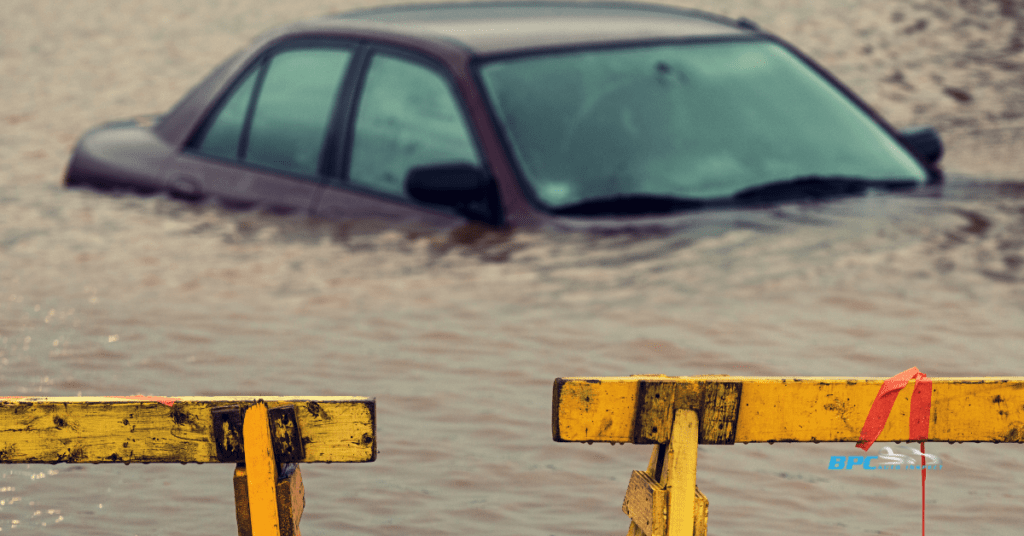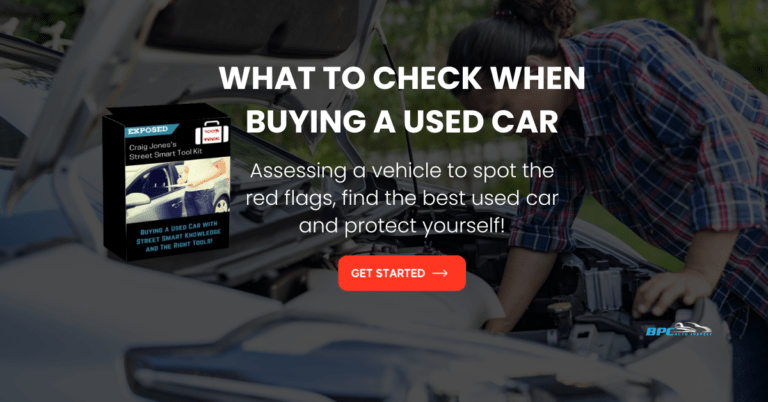Can water-damaged vehicles be repaired? Yes, here are 3 steps to follow with tips to assess a flood-damaged car and what to do before trying to start and drive. Floodwater can destroy the interior and exterior of your car. The electrical system, tyres, engine, and transmission are all vulnerable. Here are some tips on how to handle the aftermath of a flood.
When a car gets flooded, the water can cause damage to the engine and other parts of the car. It can also corrode the electrical wiring and other components that are not waterproof. Water is likely to be contaminated with sewage, saltwater, chemicals and other harmful substances so you have to use the sight and smell test first to decide if you’re going to proceed to bring your car back to life.
How To Assess A Flood-Damaged Car?
Has The Water Gone?
Check for a dirty oily water line. It will tell you what height the water got to.
Water Line Near Or Below The Bottom Of Doors
If the water line seems to be near or below the bottom of your doors, then there’s a chance that your engine and drive line are okay. Have a look at the bottom of the engine sump to see if there are any water stains. At this point, water can enter some exhaust systems through the tailpipe but the exhaust manifold that is connected to the engine cylinder head is much higher.
Water Line Reaches Top Of Wheel
If the water line reaches the top of your wheel and it’s saltwater, not freshwater, there might be some more serious issues like electric problems or water getting into the engine or drive-line components. You have to pay close attention to any water that may have entered the breather outlets on top of the transmission, transaxle (front-wheel drive) and differential (front and rear differentials if 4WD). At this point do not try and start the car.
The Water Line Is Sitting Higher Than The Bonnet
If the water line is sitting any higher than the bonnet, you’re going to have a lot of problems. This is especially true on an older model car as there’s a high chance water has penetrated every part of it. In this case, the damage may be too great to try and repair. Once again do not attempt to start the engine.

3 Steps To Do Before Attempting To Start A Flood-Damaged Car?
Repairing your flood-damaged car to restore it to a condition previously is different to trying to restart, move and get back on the road. Here we concentrate on the latter. There may be cases where you don’t have insurance and after doing the above assessment you believe you can get your car back on the road, so here’s what to do.
Check All Fluid Levels
Check all your fluid levels including engine oil, cooling system, power steering (most modern cars have electric steering) transmission or transaxle (FWD) differential and others. Look for any increase in fluid levels. If the car has water damage, it can sometimes be hard to get dipsticks back into the tube. You might also find that the reading on it is off — typically saying there’s more oil or fluid than there is.
If you suspect water in the engine oil you will notice that it is milky which means there are water droplets in the crankcase. I suggest removing the sump plug and attempting to drain the oil. You will notice immediately if there is any water because water is heavier than oil and will drain first. Proceed to drain completely replacing engine oil and filter. Remember to do this with drive-line components too.
Before Starting The Flood-Damaged Car
Before starting the car it’s important to check for any signs of water in the combustion chamber. The first hint or signs water may have entered is if you remove components from the induction system like the air filter and air intake hoses. If you see water then good chance water has entered the intake system including the combustion chambers.
From here, the best way to check for signs of water in your engine is with an inspection camera. It will give you a good look at the inside of the combustion chamber – if there’s water, you’ll know! If you don’t do this and you try and start your car the water in the combustion chamber can not compress (hydro lock) and will cause damage to major internal parts like pistons and connecting rods. Another way is to remove all spark plugs or on a diesel remove all injectors.
Check Fuel System
You will also need to check the fuel system for any water. If there’s a drain plug try draining the fuel tank or disconnecting the fuel line. Water in the fuel system will not only cause major damage to the engine if excessive but even a small amount will make the car run erratically and stall at times.
So, What To Do After Starting A Flood-Damaged Car?
From here you need to get many other components and vehicle systems checked out by professionals as soon as possible. You need to get your car to a workshop and have a mechanic be able to help you ascertain the damage. They can help you decide whether to proceed with the complete repair process or decide to cut your losses and look for another car. Before attempting to drive off just make sure the vehicle is in a roadworthy condition. Check lights and indicators, you have a good brake pedal and all other systems function or work correctly.
Conclusion
Buying a used car may be difficult due to a shortage of good quality used cars, especially in the price range from $5,000 to $10,000 since COVID-19. Also, at the time of writing and according to car journalists from Drive.com.au, there is a 3 to 12-month wait on new cars. There’s a lot of interest in buying flood-damaged cars at the moment so if you need to buy a used car make sure you check for previous flood damage. There may be many second-hand cars listed on the market soon that are repairable write-offs so make sure you do a WOVR check.
*Some links in this post are affiliate links, which means we may earn a commission at no extra cost to you. Please refer to our disclaimer for more info.








